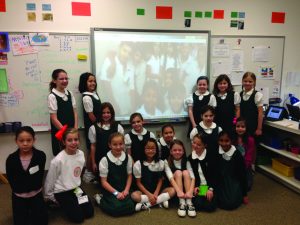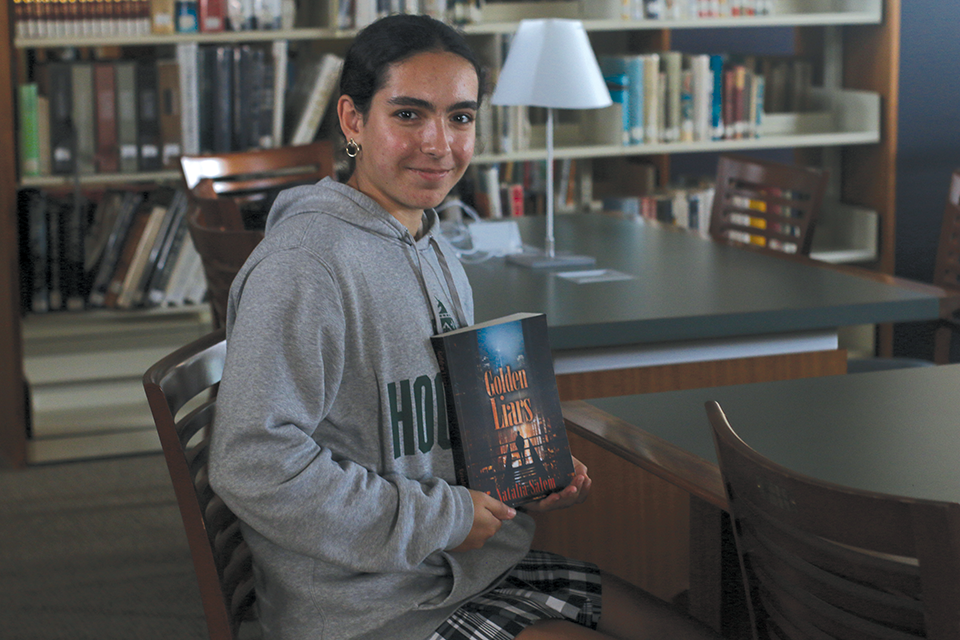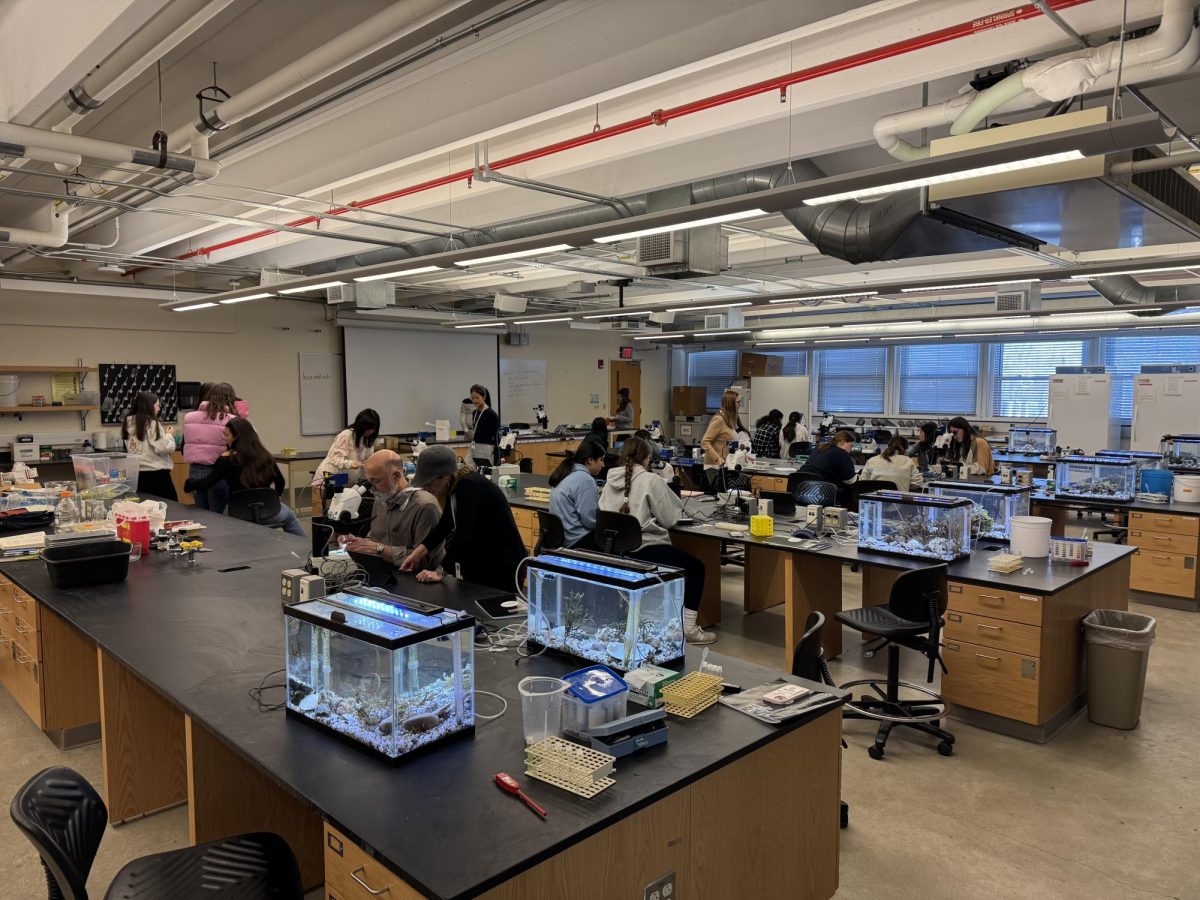Hockaday third graders Skype with schools around the world

Your memories of Hockaday Lower School are probably filled with digging for clay in the sandbox, playing mission impossible in P.E. and wearing green jumpers. However, the new generation of Lower Schoolers will remember more worldly experiences from their youngest years. That’s because they are Skyping with people from around the world.
This year, Lower School teacher Karen Roberts introduced Mystery Skyping, a program that connects students from around the world via webchat. Hockadaisies connect with another elementary school class in a location unknown to the daisies, and the students ask each other geography-type questions to locate each other on a map.
Thus far, the program has proven to be both fun and educational. Third grader Jocelyn Beard said, “It doesn’t even feel like I’m learning, and then I realize how much I’ve learned at the end.”
Roberts discovered the program through Twitter and from her professional learning network with other teachers, and she introduced it to her social studies classes since the students are currently learning about geography. The program involves schools not only in the U.S. but also in countries such as France, Hungary and Sri Lanka.
During their Social Studies class periods, the third-grade class Skypes weekly, and the video sessions usually last 20-40 minutes. During each session, every student has a specific task assigned to her as the class begins to guess the location of the students on the other end of the webcam. The positions include mappers, inquirers, runners, a photographer, a blogger and even a student who live-tweets what is going on.
“My favorite job, I have to say, is runners and inquirers. I’ve been both, and an inquirer is the person that asks questions, but the runners are more important than the inquirers because they go from the geographers to the inquirers and tell them what questions to ask [the other class],” said third grader Annie Hurley.
Once the classes figure out each other’s location, the girls enjoy discussing the similarities and differences in their schools and communities. Another one of Roberts’ students, Ella Weathersby, said her favorite thing about the program is “seeing how the two classes are different. They ask questions like ‘do you see rattlesnakes everyday?’ so it’s fun to hear the stereotypes.”
So far, the third-grade class has had the opportunity to chat with students from schools in Hawaii, Canada and even an international school in Venezuela. Skyping across different time zones requires the teachers from both classes to coordinate the meeting times. This can be difficult but has proven to be a fun experience for the girls.
Beard has enjoyed the experience. “There’s this one school that we mystery skyped, I think New York City, and they had a playground on the roof,” she said.
Hurley also found that the experience improved her geography skills. “We have this huge geography test that’s coming soon,” she said, “so I think it’s going to work.”
Roberts plans to continue with the program in future years due to its popularity among students and its success in teaching the girls about geography. “As long as I’m still teaching Social Studies, I’ll keep doing it because the girls love it,” she said. “It’s lots of fun.”
– Manisha Ratakonda



